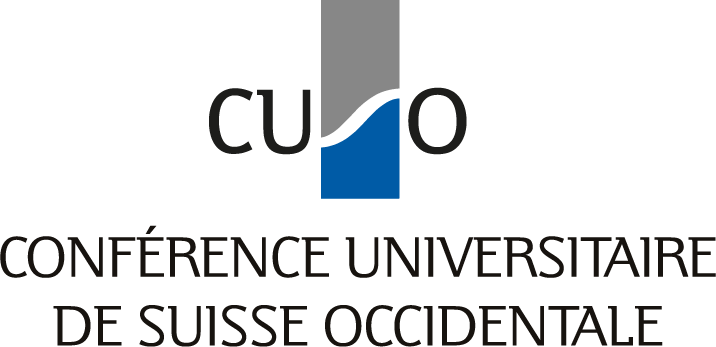Information détaillée concernant le cours
| Titre | École d’été |
||||||||||||||||||||||||||||||||||||||||||||||||||
| Dates | 10 - 13 septembre 2014 |
||||||||||||||||||||||||||||||||||||||||||||||||||
| Organisateur(s)/trice(s) | Valérie Chavez Demoulin (Université de Lausanne) Mervat Cluzeau (Université de Genève) |
||||||||||||||||||||||||||||||||||||||||||||||||||
| Intervenant-e-s | Richard Samworth : University of Cambridge, Title : Modern high-dimensional statistics |
||||||||||||||||||||||||||||||||||||||||||||||||||
| Description | Professor Richard Samworth : University of CambridgeTitle: High-dimensional statistical inference Abstract: In the 20th century, data sets tended to be fairly small, and statistical models tended to involve relatively few parameters toestimate. These days, however, modern technology allows us to collect and store data sets on previously unimaginable scales in diverse fields such as genetics, medical imaging and astronomy. Moreover, we are often faced with situations where the model dimension exceeds the sample size. I will describe some of the key methodological and theoeretical statistical ideas that have been developed over the last 15 years or so to handle such situations. Lecture 1: Brief review of the standard linear model, illustrated with an example. Ridge regression. Traditional model selection approaches: best subset selection, AIC, BIC, forward selection. Definition of the Lasso, illustrated with an example. Lecture 2: Geometric intuition and theoretical properties of the Lasso. Lecture 3: Stability selection and Complementary Pairs Stability References: Professor Thomas Mikosch : University of CopenhagenTitle: Heavy Tail Phenomena Course description: In this course we study the interplay between heavy tails of distributions and processes, and their dependence structure. A useful notion for describing heavy tails is regular variation. Early on, this notion was propagated in Sid Resnick's (1987) monograph. Since then, regular variation has become a major probabilistic tool for describing heavy tail Professor JNK Rao : Carleton University-Ottawa CanadaTitle: Small Area Estimation: Methods and Applications Course Outline : Small area estimation is a topic of current interest because of growing demand for reliable small area statistics. This short course will provide an introduction to theory and methods of small area estimation (SAE). Basic introduction to traditional sample survey theory and standard linear regression models will be provided before proceedings to SAE methods that require linear fixed and random effects models and extensions. Introduction to Bayesian methods will also be needed. 1. Traditional sample survey theory Contents will include (a) finite population parameters of interest (b) sampling frames (c) sampling methods (d) sampling weights and (e) estimation of parameters and variance estimation. 2. Traditional SAE Contents will include (a) planned and unplanned domains, (b) design issues, (c) synthetic and composite estimation, (d) MSE estimation. 3. Basic area level models Topics to be covered will include (a) Fay-Herriot model, (b) empirical best linear unbiased prediction (EBLUP), (c) methods for estimating MSE including linearization, jackknife and bootstrap, (d) benchmarking to direct aggregate estimators, (e) model selection and validation and (f) applications to real data. 4. Basic unit level models Topics to be covered include (a) nested error linear regression model, (b) EBLUP and MSE estimation, (c) model selection and validation, (d) pseudo-EBLUP using survey weights. 5. Hierarchical Bayes (HB) approach Topics to be covered will include (a) posterior mean and variance, (b) application of HB to basic area level model, (c) Bayesian methods for model validation. 6. Empirical best/Bayes (EB) estimation Topics to be covered will include (a) EB estimation for complex parameters, (b) application to estimation of poverty indicators and comparison with the World Bank simulated census method, (d) application to Spanish Income and Living Conditions dat. 7. Conclusions and recommendations Verity Elston : WorkshopTitle: « Skills in turbo-drive <link file:7013 download file>SLIDES Programme :
|
||||||||||||||||||||||||||||||||||||||||||||||||||
| Lieu |
HOTEL MERCURE Bristol Leukerbad Badehotel Bristol AG,Rathausstrasse 51 3954 Leukerbad |
||||||||||||||||||||||||||||||||||||||||||||||||||
| Information | Mercure Bristol Leukerbad / Loeche les Bains www.mercure.com/fr/hotel-6927-mercure-bristol-leukerbad-loeche-les-bains/location.shtml En voiture : depuis Leuk Susten, prendre la direction de Loèche-les-Bains (Leukerbad) sur 16 km. Arrivé à Loèche-les-Bains, tourner à droite au premier rond-point, puis à gauche 100m plus loin. Vous êtes arrivé à l'hôtel Mercure Bristol. En train : àLeuk Susten, prendre le car pour Loèche-les-Bains. La navette de l'hôtel gratuite viendra vous chercher à la gare de Loèche-les-Bains si vous leur communiquez votre heure d'arrivée. |
||||||||||||||||||||||||||||||||||||||||||||||||||
| Frais | Doctorant CUSO chambre double ou quadruple : CHF 150 Merci de faire vos versement sur le compte ci-dessous :
|
||||||||||||||||||||||||||||||||||||||||||||||||||
| Inscription |
|
||||||||||||||||||||||||||||||||||||||||||||||||||
| Places | 50 |
||||||||||||||||||||||||||||||||||||||||||||||||||
| Délai d'inscription | 02.09.2014 |


